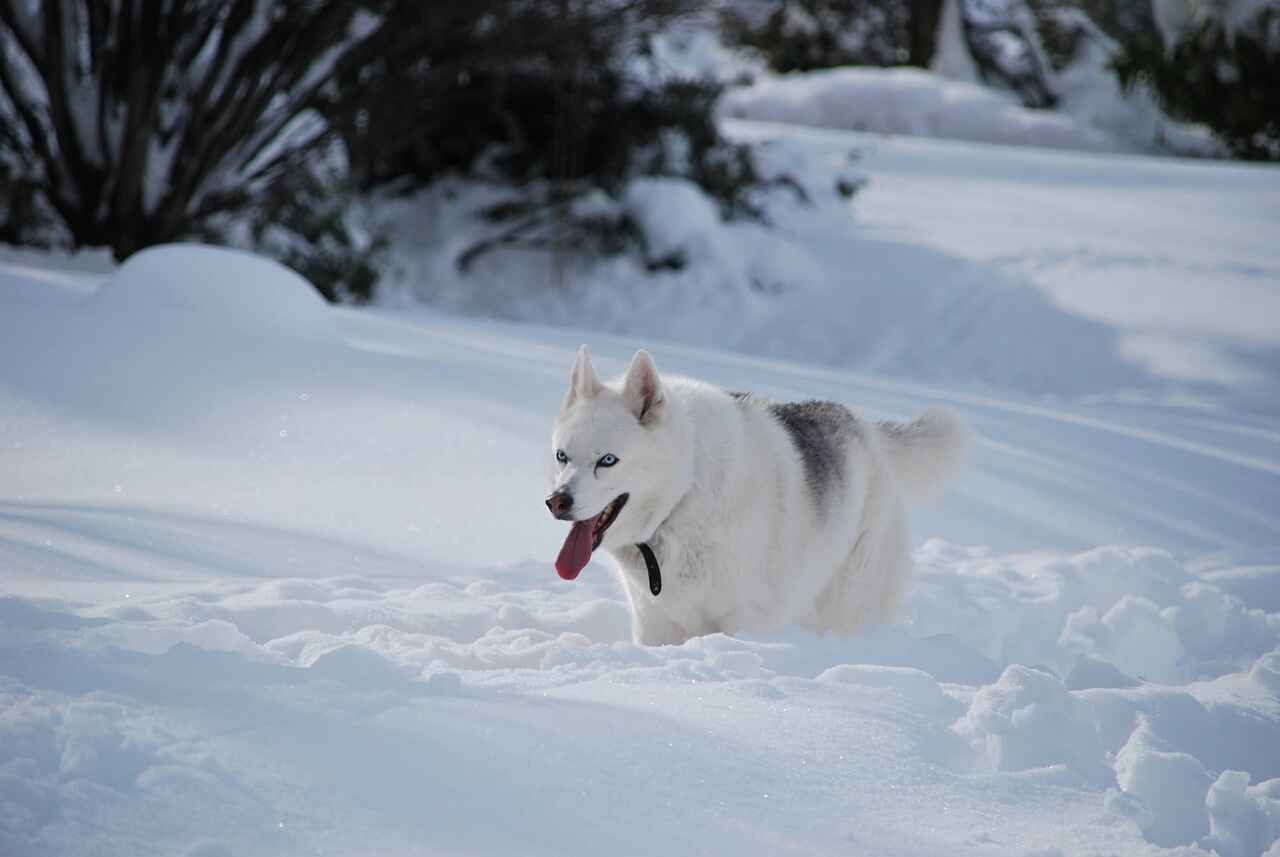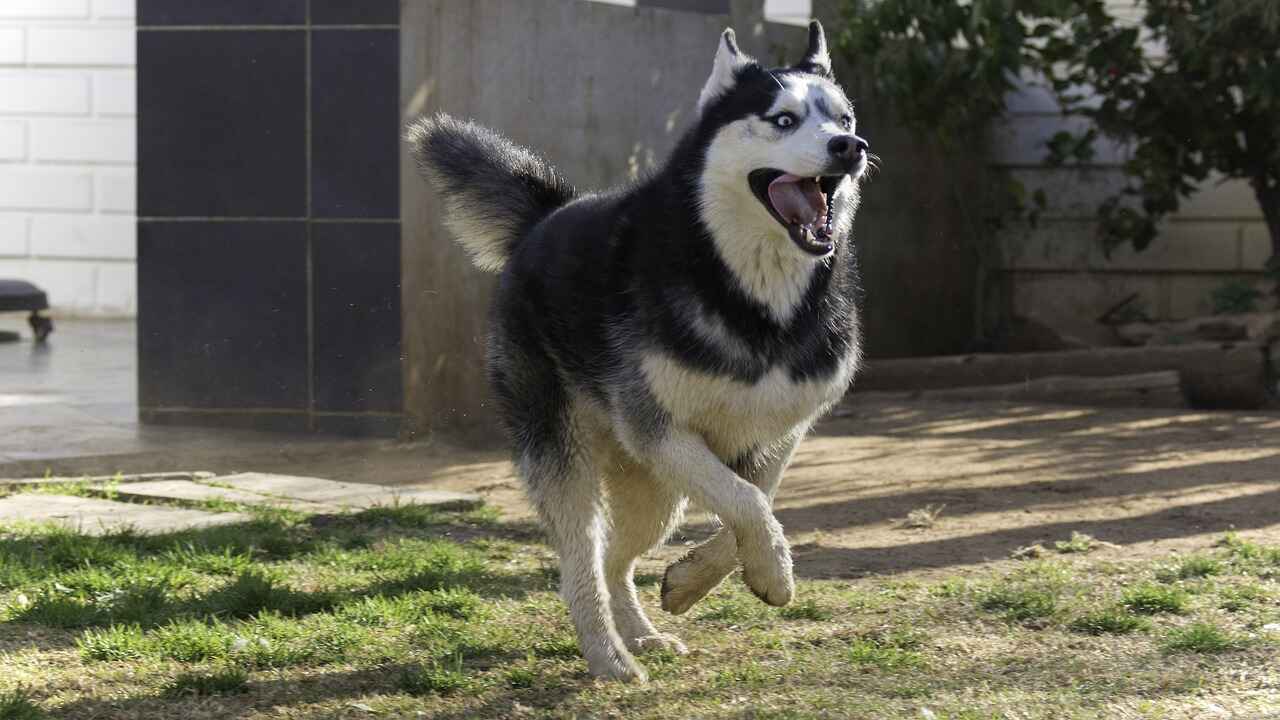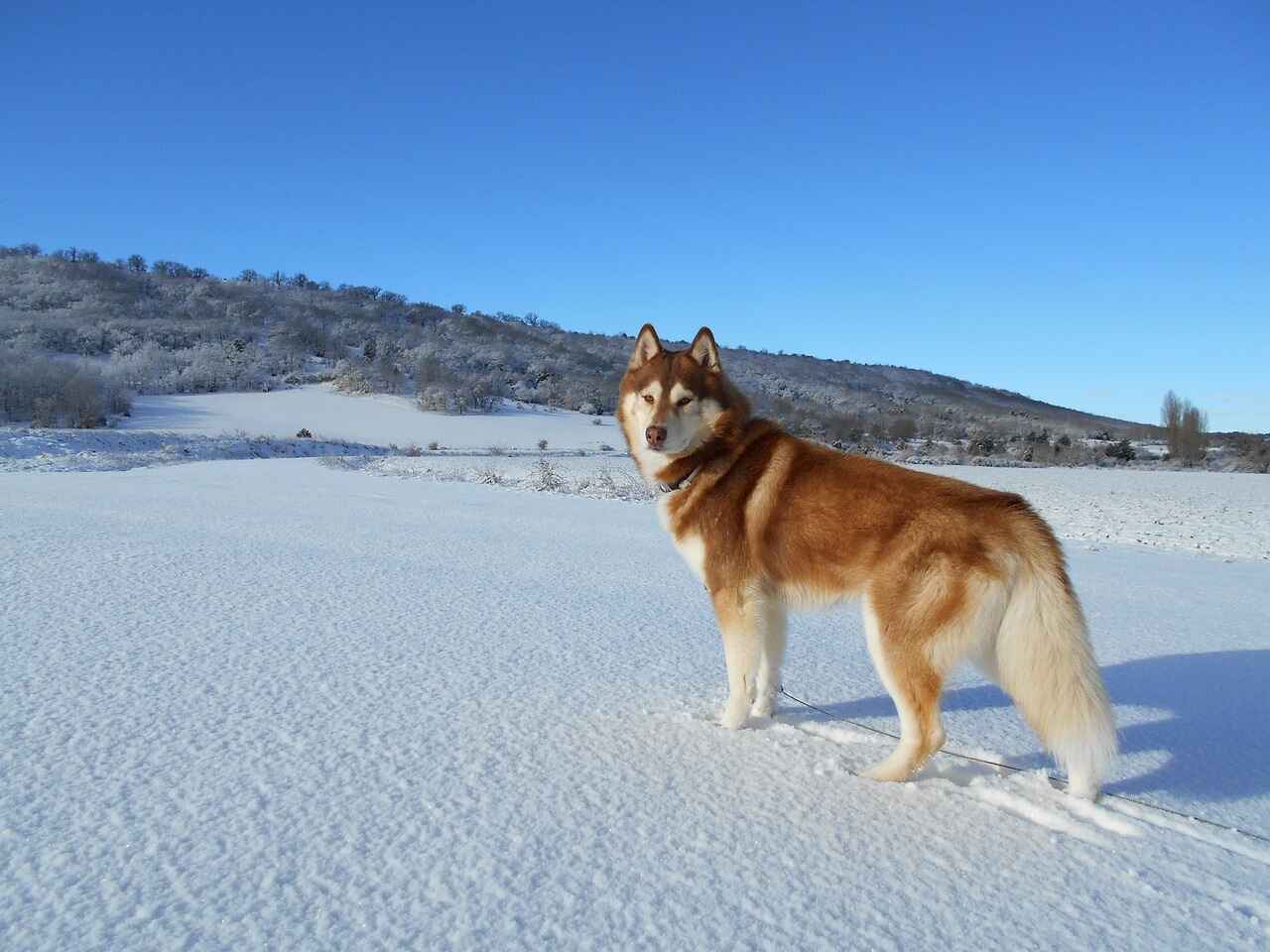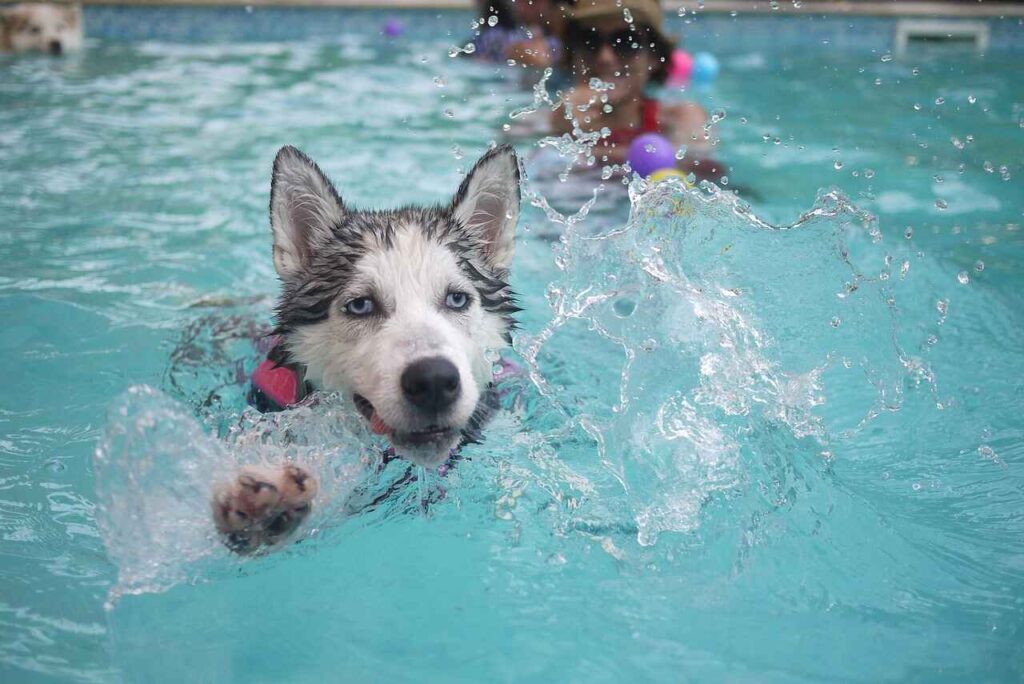Introduction to Siberian Husky Colors
Exploring the Stunning Palette: Siberian Husky Coat Colors are widely recognized for their remarkable good looks, and their multiplicity of coat colors is one of their most appealing uniquenesses.
A Siberian husky’s different good looks and charm are improved by the huge variation in the color of their coat.
Common colors for the breed are black and white, gray and white, and red and white, each of which gives it an exceptional exterior.
Since certain genes settle on the variances seen in their coats, it can be charming to recognize the inheritance that underlies these hues.
Discovering the variety of colors available for Siberian huskies will help you be grateful for the breed’s prettiness and the compound inheritance that goes into creating its exceptional exterior, whether you’re a devotee or a possible owner.
Overview of the Variety of Husky Colors
The striking and generally wolf-like manifestation of Siberian huskies is recognized by their wonderful variety of coat hues.
The most popular combinations, which draw attention to the characteristic manifestation of the breed, are black and white, gray and white, and red and white.

Even within these categories, there is variety in the palette due to the hue and concentration of these colors.
Agouti and white, which have a wild, crude characteristic, and sable and white, which have well-off, reddish-brown tones, are less common yet no less beautiful combinations.
A rare breed, the untainted white Siberian husky has a flawless, almost ethereal exterior. To improve their unique good looks.
Huskies may exhibit a range of markings and patterns, such as masks, glasses, and mottled patterns.
In addition to giving every husky its own separate color and pattern, this wide variation in hues and patterns highlights the hereditary assortment and wealth of the breed.
Importance of Understanding Husky Color Genetics
It is necessary for Siberian husky owners, breeders, and fans to realize the genetics of the original color variations.
Thoughtful color inheritance enables breeders to make knowledgeable decisions that conserve the genetic variety and physical condition of the breed by achieving attractive coat hues.
Breeders can utilize it to estimate possible color results in litters, which helps them continue an impartial approach to breeding that doesn’t prioritize outer shell over health.
Knowing about color inheritance can help adopters and owners better appreciate the health risks and hereditary personality of different colors.
This information can help dismiss myths and false attitudes, such as the idea that fastidious colors keep in touch with a particular behavioral individuality.
All things measured, a careful understanding of husky color inheritance encourages the right breeding methods, supports the breed’s health and variety, and helps lovers be familiar with the beautiful variation in the Siberian husky coat.
Common Siberian Husky Colors
Black and white is one of the most well-known and popular color combinations for Siberian Huskies, which are renowned for their stunning and varied coat hues.
This timeless style frequently includes eye-catching facial piercings and an array of designs all over the body.
Huskies in gray and white, which come in a variety of colors from light silver to dark charcoal, are also very popular. Red and white huskies are distinctive and visually striking due to their warm and brilliant colors.
Every color combination accentuates the wolf-like ancestry of the Husky while enhancing each dog’s uniqueness.
In addition to adding to the breed’s aesthetic appeal, these prevalent hues highlight the vast genetic variation that makes Siberian Huskies one of the most eye-catching canine breeds.
Black and White: The Classic Husky Look
The black and white Siberian husky captures the spirit of the breed’s regal and wolf-like appearance, making it the embodiment of the classic and definitive look.

This color scheme, which combines crisp, pristine whites with tones ranging from softer, charcoal tones to deep, jet-black, is not only very popular but also quite adaptable.
The dramatic contrast between the white and black furs frequently draws attention to the husky’s unique facial features, such as their brows, masks, and eyeglasses, which add to their endearing and expressive facial expressions.
The husky’s striking blue or multicolored eyes add to their trademark coloring, enhancing their already amazing appearance.
In addition to being aesthetically pleasing, the black and white coat has Siberian roots, where these colors were useful for camouflaging in wintry environments.
Husky enthusiasts continue to love this traditional color scheme because it perfectly captures the raw charm and timeless beauty of the Siberian husky.
Gray and White: A Popular Husky Combination
Another well-liked and popular color combination for Siberian huskies is gray and white, which gives them a refined and beautiful appearance.
The gray can create a stunning gradient that accentuates the dazzling white fur, ranging from light silver tones to deep black charcoal.
This combination frequently draws attention to the breed’s wolf-like traits and strong, athletic frame, giving them a commanding and respectable appearance.
The expressive facial features of the gray-and-white husky, such as masks and eyebrows, contribute to their captivating and endearing expressions.
Their appealing look is enhanced by the striking contrast between their eyes, which can be either icy blue, rich brown, or even bi-colored.
In addition to being aesthetically beautiful, this color combination has a functional purpose by naturally camouflaging the breed in snowy settings.
Red and White: A Striking Husky Variation
With its warm and vivid colors, the red and white Siberian husky is a remarkable and distinctive variant that draws attention.
The white fur that frequently covers the chest, legs, and face contrasts dramatically with the red, which can range in tone from deeper, rich copper to lighter, nearly orange.
This color scheme adds a hint of exotic flair while enhancing the Husky’s wolf-like appearance. In addition to enhancing their coat color, red and white Huskies frequently have liver-colored noses and eye rims that set them apart from other color variations.
Their intriguing and profound looks are further enhanced by the way their eyes, which can be blue, amber, or even green, contrast brilliantly with their red fur.
This bright coloring accentuates the joyful and lively nature of the breed in addition to highlighting its inherent attractiveness.
Red and white huskies are prized for their unique looks and the coziness they add to the breed’s wide range of colors.
Markings and Patterns in Siberian Huskies
The diverse marks and patterns that Siberian huskies display enhance their alluring appeal and uniqueness.
One of the most distinguishing features is the facial mask, which can cover the eyes as well as the muzzle and stands out sharply against the coat’s other colors.
Furthermore, huskies may have identifying features like eyebrows, which highlight their captivating and expressive facial expressions.
The piebald or “pinto” design, which has big colored patches on a mostly white background, is another popular pattern.
This pattern can appear in a variety of combinations, giving the husky’s coat distinctive and striking patterns.
The breed’s allure is enhanced by additional characteristics like spots, freckles, or colored streaks.
Because of their wide genetic diversity, huskies have distinctive markings and patterns that complement their individual personalities and contribute to their appeal as cherished friends.
Understanding Husky Masks: Types and Variations
To appreciate the unique facial traits and expressions of the breed, one must have a thorough understanding of husky masks.
The Husky’s masks, which are patches of dark pigment that cover the nose and frequently extend to the eyes, contrast sharply with the rest of the coat.
Husky masks come in a variety of styles and forms, each enhancing the unique character of the breed.

The most popular kind is the conventional mask, which highlights the husky’s wolf-like appearance by covering the muzzle and maybe extending somewhat around the eyes.
A full mask that covers the entire muzzle and reaches the eyes can give some huskies a fierce and aggressive look.
Partial masks are another type in which the dark pigmentation is either less noticeable or simply covers a portion of the muzzle. Knowing these mask differences enhances one’s awareness of the breed’s aesthetic appeal and sheds light on its distinct expressions and personality features.
Piebald Huskies: Characteristics and Appearance
Large color patches set against a mostly white background give Piebald Huskies a distinctive and eye-catching appearance.
Each Piebald Husky is genuinely unique due to the enormous range of patterns created by the variation in size, shape, and distribution of these patches. Solid-colored patches, speckled patterns, or even asymmetrical splotches that mimic paint splatters are examples of common patterns.
The husky’s appeal and attraction are enhanced by the contrast between the colored patches and the white fur, which sets them apart from other coat types.
Piebald Huskies may also have additional distinguishing features like masks, eyeglasses, or eyebrows, which further to their already captivating and expressive appearance.
Piebald Huskies retain the wolf-like characteristics of their breed, such as their upright ears, piercing gaze, and powerful, athletic physique, even with their multicolored coat.
Piebald Huskies are a well-liked breed among owners and enthusiasts due to their distinctive appearance and loving, lively personality.
Splash Coat Pattern: Unique Husky Coloration
Siberian Huskies have a distinctive and striking coloration known as the splash coat pattern, which is made up of erratic colored patches splattered over a mostly white background.
This unique pattern gives the Husky a dramatic and energetic appearance that distinguishes it from other breeds. It resembles paint splatters or splashes.
The size, form, and distribution of the colored patches can vary, producing a wide variety of patterns that make every Husky splash coat genuinely unique.
These patches frequently contain black, gray, red, or even varying shades of brown, which enhances the coat’s aesthetic appeal.
The Husky’s athleticism and elegance are emphasized by the contrast between their white fur and colorful patches, which accentuates their majestic presence and exquisite movement.
Splash coat Huskies are beloved pets and valued companions because they retain the breed’s hallmarks despite their vibrant coats, such as their amiable demeanor, lively personality, and close relationship with their human companions.
How Husky Colors Are Inherited
The intricate interaction of genetic components inherited from their parents determines the hue of a husky child.
Multiple genes are involved in the genetics of coat color in huskies; these genes contribute to different elements of coat coloration, such as pigmentation intensity, pattern, and distribution. The complex interactions between these genes can produce a wide range of coat colors and patterns in the breed.
Furthermore, the existence of dilution genes can alter the hue of a husky coat, producing lighter tones or variances in color.
In order to ensure the diversity and beauty of husky coat colors for future generations, breeders carefully choose mating couples, taking into account other criteria including health, temperament, and conformation in addition to desired color outcomes.
Caring for Huskies with Different Coat Colors
Different colored Huskies require different grooming techniques and health precautions according to their individual requirements.
Regular grooming is necessary to regulate shedding and preserve the health of the Husky’s coat, which might be more apparent in particular colors like red or black.
This applies to all coat colors. Lighter-colored huskies, like white or gray, would need more regular bathing to maintain a clean, glossy coat.
All Huskies also benefit from routine brushing in order to prevent matting and remove stray fur; this is particularly crucial for those with longer or thicker coats.
Taking health concerns into account, including shielding lighter-coated Huskies from sunburn or keeping an eye out for skin disorders, is another crucial part of caring for Huskies with various coat colors.
Huskies of all hues can thrive in their surroundings by being given a balanced diet, adequate exercise, and regular veterinary treatment. These factors all contribute to general health and well-being.
Grooming Tips for Different Husky Colors
The grooming advice for various Husky hues varies slightly based on the unique requirements for each coat color.
Regular brushing helps remove loose fur and avoid matting in Huskies with deeper coat colors, such as black or red, which can be more noticeable. It’s very useful to use an undercoat rake or slicker brush to control shedding and keep their hair healthy.
Huskies with lighter coat colors, like white or gray ones, would need more regular bathing to maintain their glossy, clean coats.
Using a mild shampoo designed specifically for dogs is imperative to prevent depleting their coat of natural oils.
Furthermore, huskies with lighter coats could be more vulnerable to sunburns, so when they spend time outside, it’s best to offer shade or use sunscreen that’s safe for pets.
Overall, regular brushing, periodic baths, and normal nail cutting improve the health and beauty of Huskies of all colors, regardless of the color of their coat.
Health Considerations for Various Husky Coats
Protecting their skin and coat from the outdoors and potential problems related to particular hues are the main health considerations for different types of husky coats. Due to their lighter pigmentation, huskies with lighter coat colors, such as white or gray, may be more prone to sunburn.
It is crucial to offer shade and minimize exposure to direct sunlight, particularly during high-traffic times. Using sunscreen that is safe for pets on a regular basis can also help shield their skin from UV radiation.
In addition, huskies with darker coats, like those of black or red, may take in more solar heat and become more prone to overheating. Important safety measures include giving enough water and shade, as well as avoiding strenuous exercise in hot weather.
All Huskies, regardless of coat color, may maintain their general health and wellness with regular veterinary treatment, exercise, and a balanced diet.
Frequent grooming is also essential for the early detection and prevention of potential health problems. This includes combing to remove loose fur and looking for any irregularities or symptoms of skin irritation.
Conclusion: Exploring the Stunning Palette: Siberian Husky Coat Colors
In conclusion, Siberian huskies’ varied coat colors and patterns contribute to their appeal and charm and highlight the breed’s great genetic diversity and distinctive history.
Every Husky coat variant, from the traditional black and white to the eye-catching red and white, adds to the breed’s alluring and dynamic appearance.
Breeders can ensure the health and preservation of the unique qualities of the husky breed by making informed decisions based on their understanding of the genetics underlying the breed’s colors and patterns.
Understanding the beauty of husky coats and giving them the care and attention that suits their individual needs go hand in hand with owners and admirers.
Proactive grooming and health considerations are crucial, whether it’s shielding lighter-colored Huskies from sunburn or controlling shedding in darker-coated Huskies.
In the end, the relationship between humans and huskies is about more than just coat color; it’s about adventures, love, and friendship.
Siberian huskies continue to win people over with their majestic presence and devoted character, regardless of how they look.


Hey people!!!!!
Good mood and good luck to everyone!!!!!